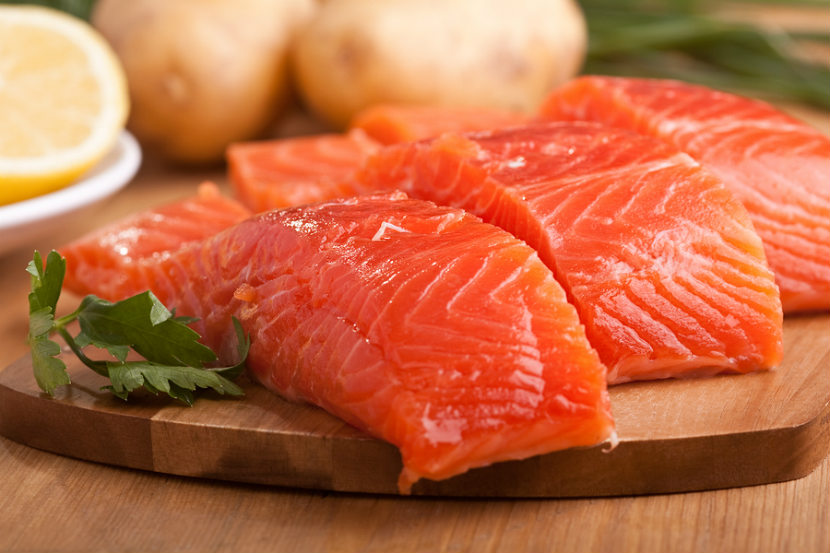
Farmed salmon is grown in cages near the shore to make it easier to harvest and sell them. Wild salmon is caught in the ocean. Both farmed and wild salmon are very nutritious. They are both rich in protein, vitamin D, calcium (from the bones) and healthy omega-3 fats.
Salmon and PCBs
Farmed and wild salmon contain PCBs (Polychlorinated Bisphenyls), which are contaminants found in our environment and build up in fish. The level of PCBs found in both farmed and wild salmon is safe according to Health Canada. They do not pose a health risk to Canadians. However, farmed salmon may have higher levels of PCBs than wild salmon. This is because PCBs build up in the fat of fish, and farmed salmon has a higher fat content. You can limit your exposure to PCBs when choosing farmed salmon by removing the skin, any inner organs and any visible fat before you eat the fish. Broiling, baking or grilling fish are healthy cooking methods that lower the amount of fat and PCBs you consume.
Salmon and mercury
Mercury levels in salmon are very low. Other types of fish are high in mercury. It is important to limit eating fish that are high in mercury especially if you are pregnant or breastfeeding. Read more here.
Tips for adding salmon to your diet
Canada’s Food Guide recommends eating at least two servings (75g or 2.5 oz each) of fish per week. Try these helpful tips in getting your weekly recommended servings:
-
Add cooked salmon to omelettes or frittatas for a delicious breakfast.
-
Add cooked or low sodium canned salmon to a salad for a healthy, light lunch.
-
Grill, broil or bake salmon at least once a week for dinner. It is an easy, tasty and convenient way to add salmon to your diet.
-
Use leftover salmon in pasta and green salads.
-
Serve salmon dip with fresh vegetables and whole wheat crackers.
-
It is often more economical to buy a large portion of salmon and cut it into steaks or fillets to freeze. Wrap cut pieces tightly in plastic wrap or place in a freezer bag for up to three months.
You may also be interested in:
All about canned salmon
All about fish
Last Update – October 18, 2017